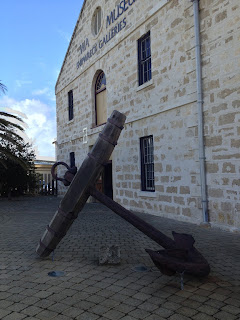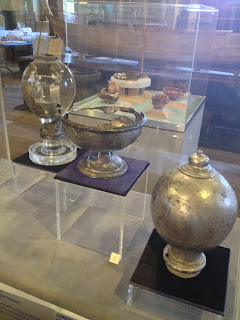Designed by William Ashyford Sandford in 1852, Old Perth Boys School was one of the first government buildings built in Western Australia. Located on St George's Terrace the building is single story and constructed of limestone. Sandford, the colonial secretary in Western Australia between 1852-1855, was also the chairman of the school board for the Swan River Colony. Sandford was a member of a group of architects known as the Cambridge Camden school. The architectural group, founded in 1839 by undergraduates at Cambridge, aimed to focus on Gothic architecture and the Ecclesiastical antiques. Old Perth Boys School was been designed by Sandford in a Gothic Revival Style. This architectural style draws heavily on the original gothic style incorporating features such as decorative patterns, lancet windows and finials.
The location chosen to build the school was originally the site of a water-powered mill that was operated by Henry Willet Reveley. Originally recruited by James Stirling, Reveley was the civil engineer for the Swan River Colony and responsible for the earliest public works. The chosen site for Old Perth Boys School proved to be quite boggy and this added to the construction time and cost as extra foundation was required to stabilise the building. Old Perth Boys School has a steeply pitched roof that was originally shingled but now has a corrugated iron roof. A bell tower, spire and narrow windows of the original building made it resemble a church. The building was long and but not wide and soon proved to be too small for its purpose so a wing was added in 1865 to the south of the building. Another wing was added to the north of the building a few years later.











The population of the school averaged about 200 hundred students however in 1894 the gold rush in Western Australia swelled the school population to 346. This increase in students resulted in the construction of temporary timber extensions at the east end of the school. In 1896 new school facilitates were built to accomodate a boys and girls school in Perth, resulting in the building being vacated and used as a temporary premises for the Perth Technical School in 1900.
In 1910 government architect, Hillson Beasley was commissioned to build the Perth Technical School. The building, which is attached the Old Perth Boys School, was a Federation Free Medieval design. Rising three levels the building is a square tower with castellated parapets and is constructed of red brick with limestone footings and Donnybrook stone trimmings. The interior boasts jarrah joinery, a large jarrah staircase linking the three floors and Art Deco lead light windows. Renamed the Perth Technical College in 1929 the institution served as the first tertiary facility in the state.
In the 1980s the then premier of the state proposed to knock down Old Perth Boys School and the Perth Technical College, along with several other buildings on St George's Terrace. Public outcry and a community group called the Castlekeepers led protests and the idea was shelved. Over the years the two buildings passed through various hands. In 1990 the National Trust used the buildings for offices, a bookshop and eventually a cafe. A private cafe operated in the building for awhile. The Old Perth Boys School was completely restored and is currently leased by Curtin University. Both the Old Perth Boys School and the adjoining Perth Technical College were made part of the Brookfield Place complex, with the Technical College buildings being recycled and used for various retail and specialty stores.
The Old Perth Boys School was entered into the Register of the National Estate by the Australian Heritage Commission in March 1978 and permanently entered into the State Register of Heritage Places in March 1982. The adjoining Perth Technical College building was registered on the National Estate in 1989 and was classified by the National Trust in 2004. It has also been included in the City of Perth's municipal inventory and was listed on the State Registry of Heritage Places on January 9th 1998.
The supposed haunting of these buildings has a personal resonance with me as I saw a full-bodied apparition in one part of these buildings with my own eyes. There is a story that one of the younger students of the Old Perth Boys School drowned in the nearby river. The Swan River was right by the school in the early days. When the buildings were renovated many of the detritus from school days was uncovered under the floorboards. Items like coins, marbles and pencils were all lovingly discovered and preserved. In the building is one of the hairdressering salons I use. The salon staff and customers report all sorts of cold spots and lights going on and off on their own. A psychic that visited the building said she was aware of the ghost of a small boy. One of the hairdresser said that she felt tugs at her lower leg like a child was trying to get her attention. The staff and patrons have reportedly heard what sound like marbles rolling across the wooden floors. I was sitting in one of the salon chairs reading a magazine when I had a feeling someone was behind me. Sure enough I looked up and in the mirror just behind me looking up from behind my shoulder I saw a small boy. When I turned he was gone only to reappear when I once again looked in the mirror. His face was very clear and vivid to me and as I turned to face him again he was not there. He did not reappear. I can not explain what I saw as I was the only customer in the salon with one hairdresser.
These buildings are both so beautiful and I am so happy that they have been lovingly preserved.


























































